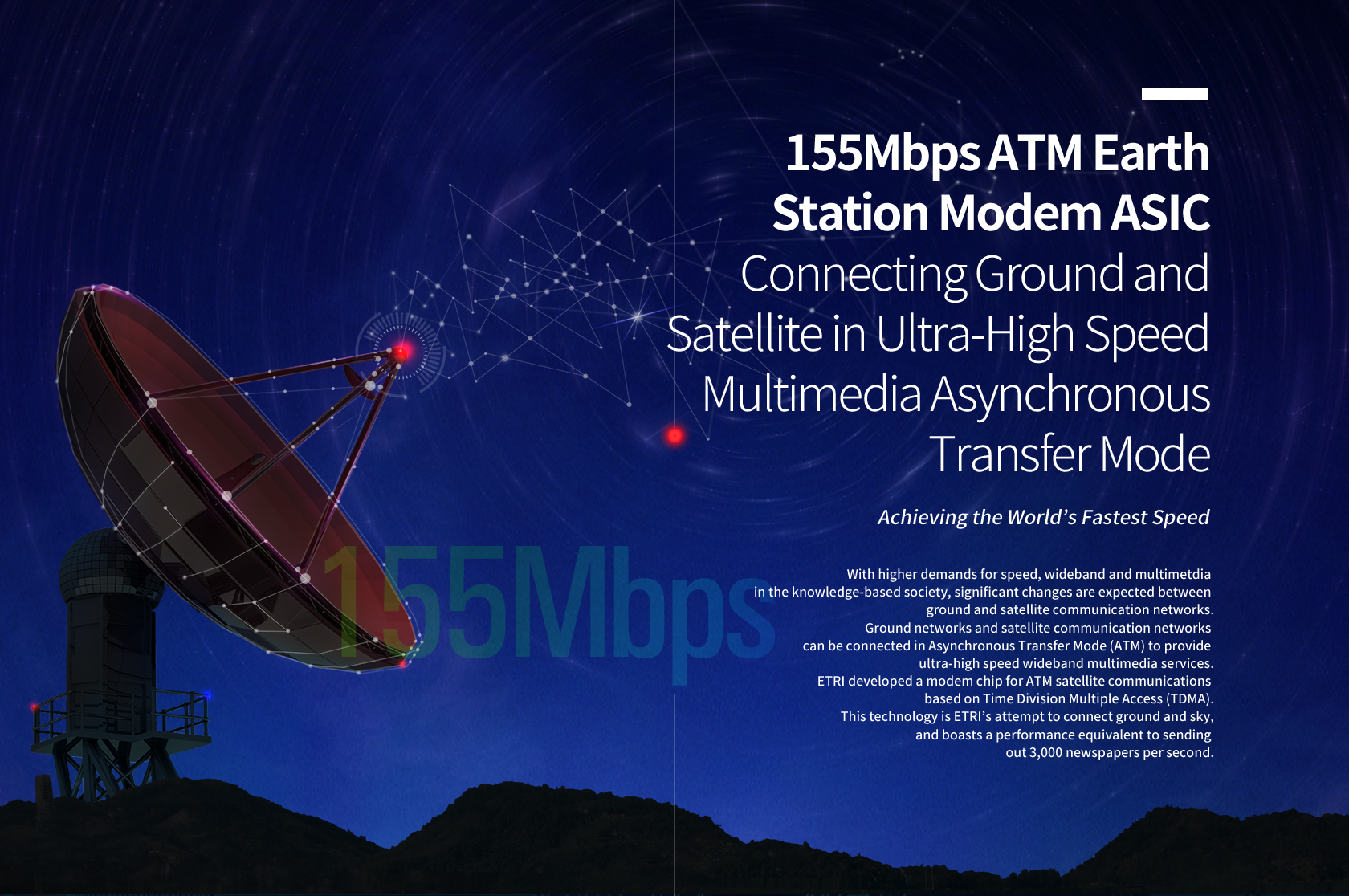
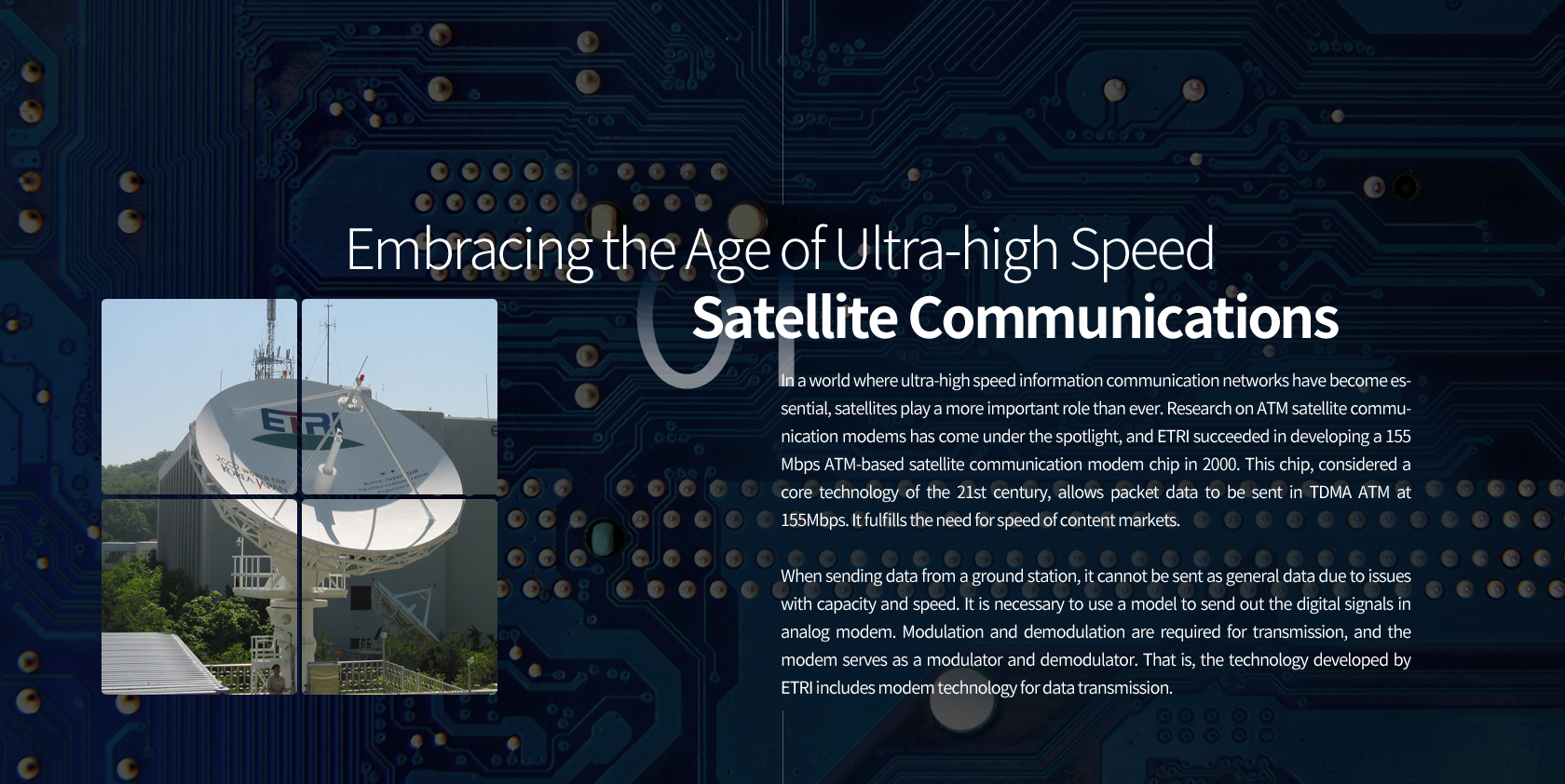
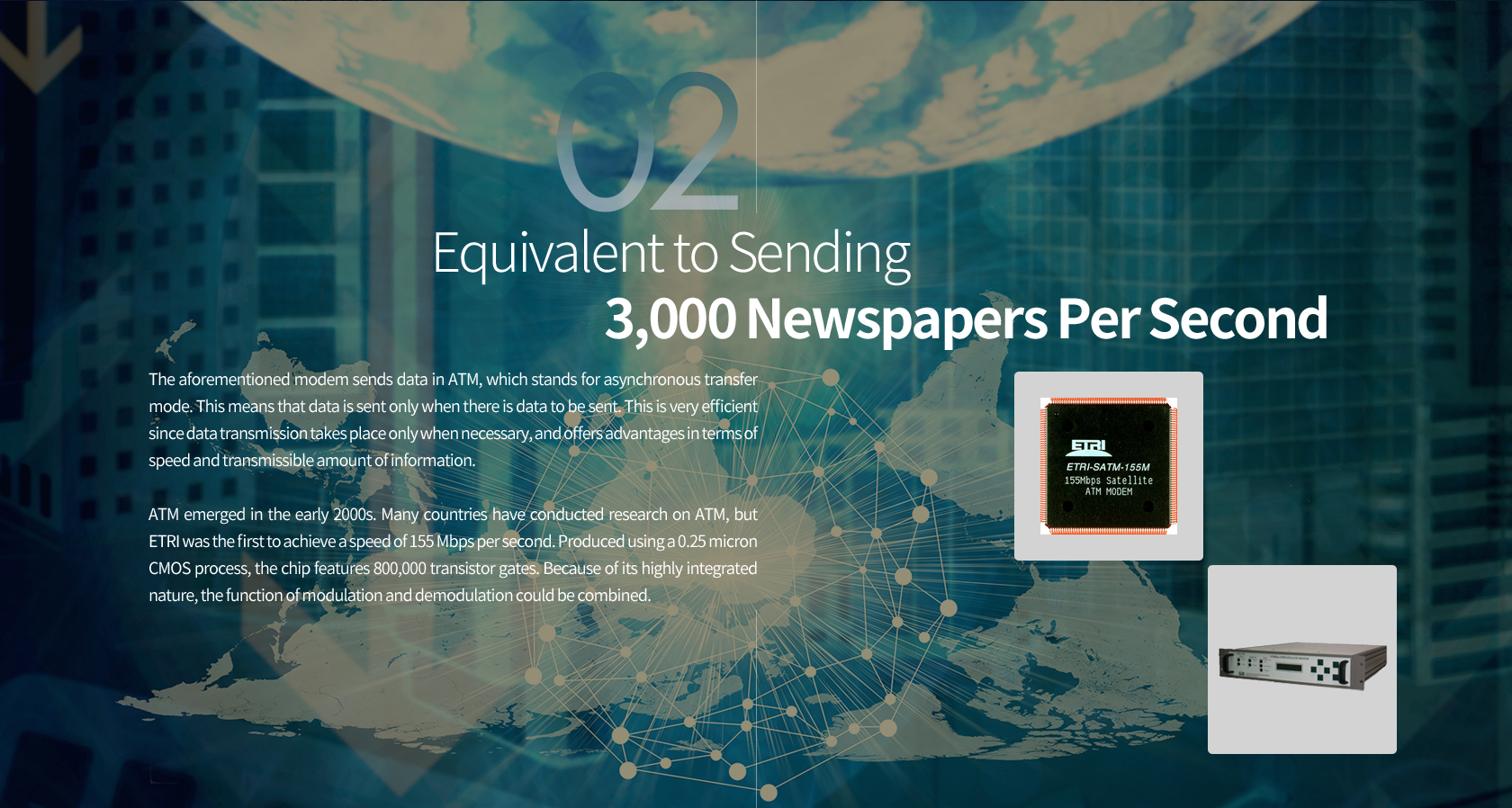
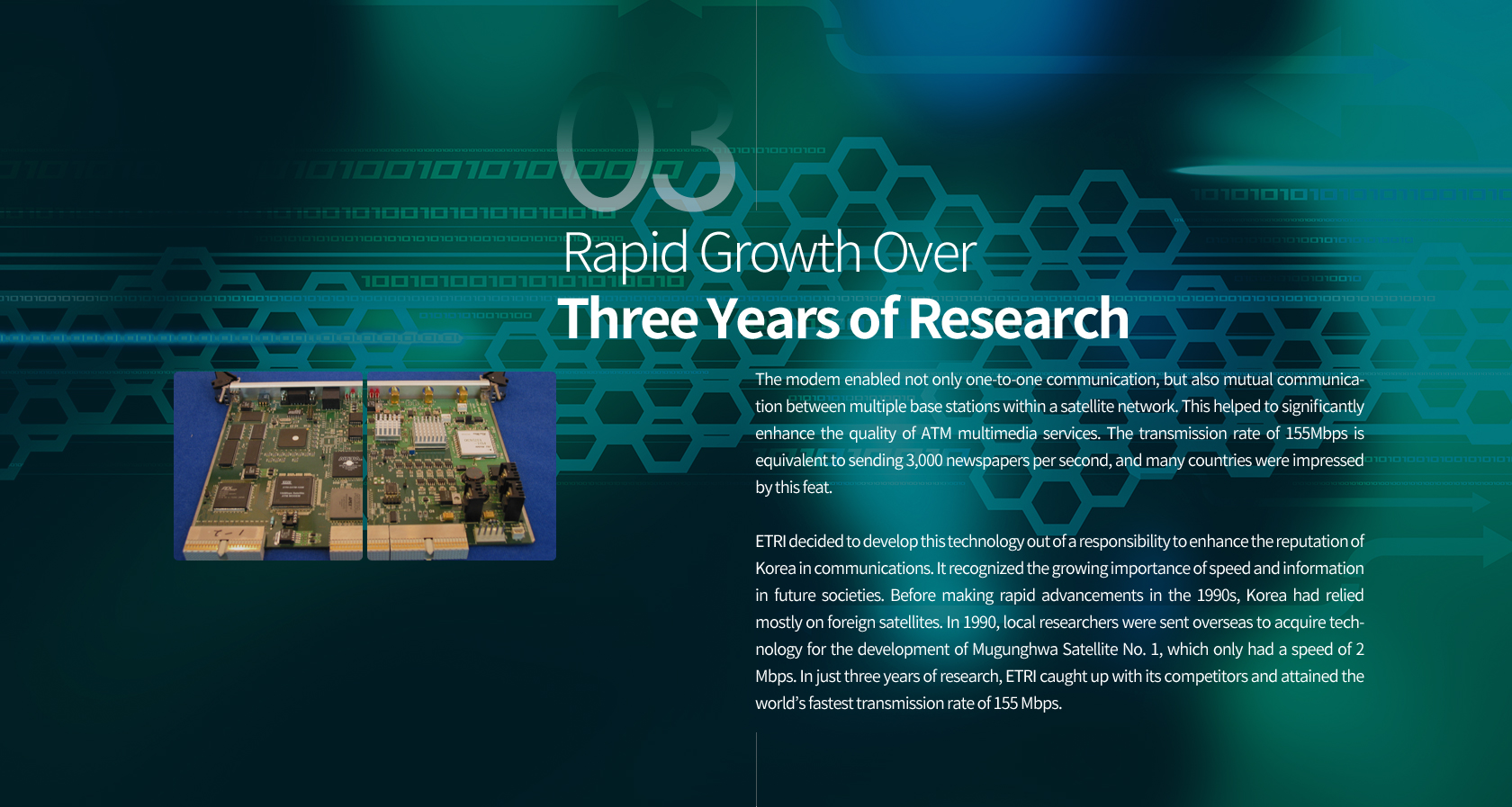
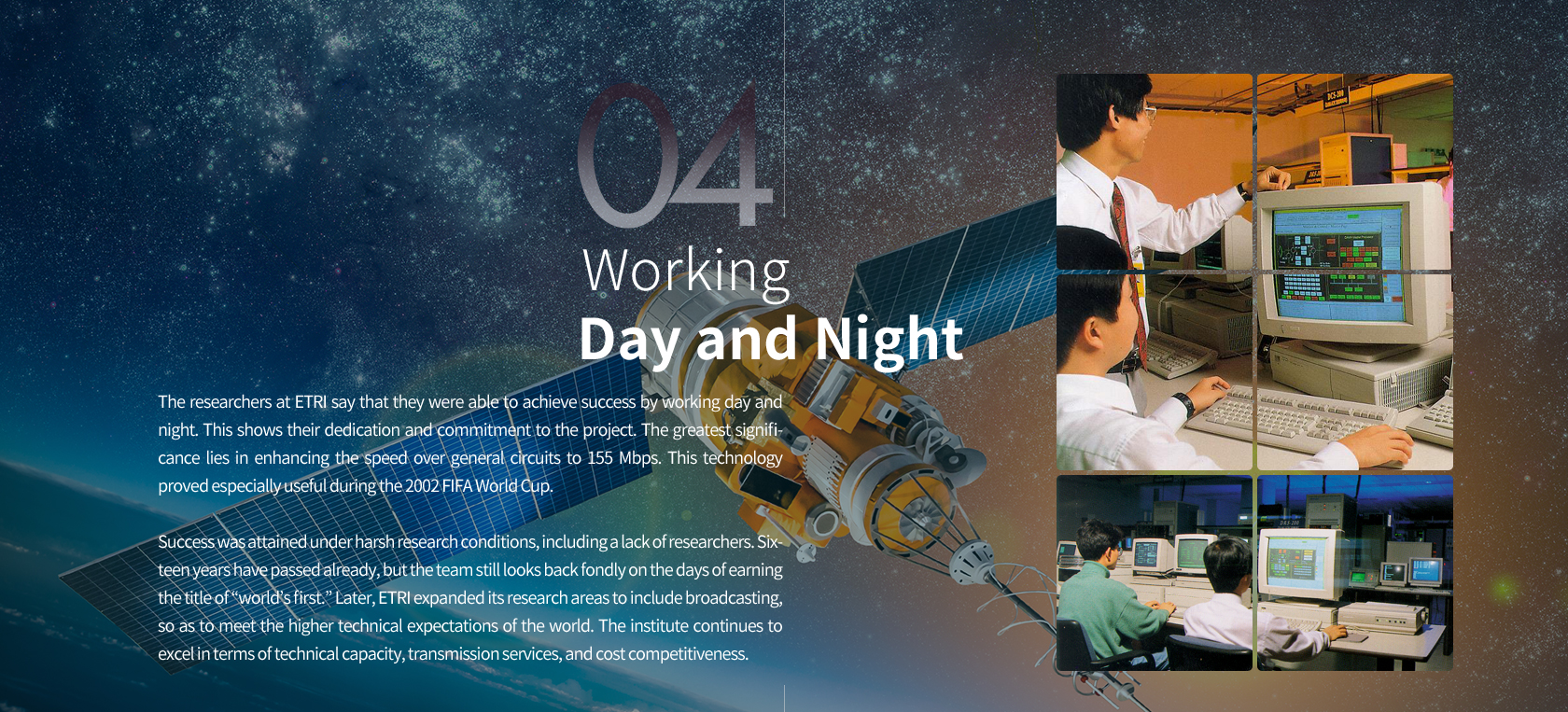


155Mbps ATM Earth
Station Modem ASIC
Connecting Ground and
Satellite in Ultra-High Speed
Multimedia Asynchronous
Transfer Mode
Achieving the World’s Fastest Speed
With higher demands for speed, wideband and multimedia in the knowledge-based society, significant changes are expected between ground and satellite communication networks. Ground networks and satellite communication networks can be connected in Asynchronous Transfer Mode (ATM) to provide ultra-high speed wideband multimedia services. ETRI developed a modem chip for ATM satellite communications based on Time Division Multiple Access (TDMA). This technology is ETRI’s attempt to connect ground and sky, and boasts a performance equivalent to sending out 3,000 newspapers per second.
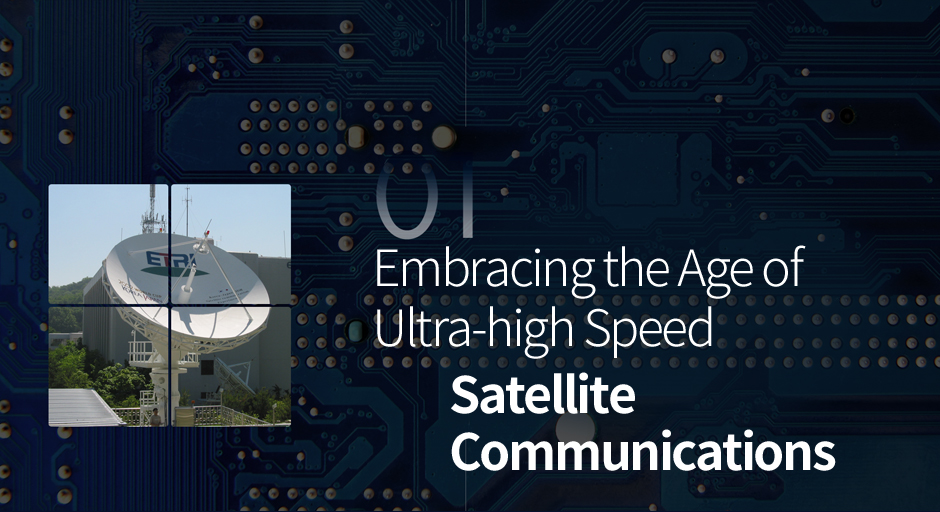
In a world where ultra-high speed information communication networks have become essential, satellites play a more important role than ever. Research on ATM satellite communication modems has come under the spotlight, and ETRI succeeded in developing a 155 Mbps ATM-based satellite communication modem chip in 2000. This chip, considered a core technology of the 21st century, allows packet data to be sent in TDMA ATM at 155Mbps. It fulfills the need for speed of content markets.
When sending data from a ground station, it cannot be sent as general data due to issues with capacity and speed. It is necessary to use a model to send out the digital signals in analog modem. Modulation and demodulation are required for transmission, and the modem serves as a modulator and demodulator. That is, the technology developed by ETRI includes modem technology for data transmission.

The aforementioned modem sends data in ATM, which stands for asynchronous transfer mode. This means that data is sent only when there is data to be sent. This is very efficient since data transmission takes place only when necessary, and offers advantages in terms of speed and transmissible amount of information.
ATM emerged in the early 2000s. Many countries have conducted research on ATM, but ETRI was the first to achieve a speed of 155 Mbps per second. Produced using a 0.25 micron CMOS process, the chip features 800,000 transistor gates. Because of its highly integrated nature, the function of modulation and demodulation could be combined.

The modem enabled not only one-to-one communication, but also mutual communication between multiple base stations within a satellite network. This helped to significantly enhance the quality of ATM multimedia services. The transmission rate of 155Mbps is equivalent to sending 3,000 newspapers per second, and many countries were impressed by this feat.
ETRI decided to develop this technology out of a responsibility to enhance the reputation of Korea in communications. It recognized the growing importance of speed and information in future societies. Before making rapid advancements in the 1990s, Korea had relied mostly on foreign satellites. In 1990, local researchers were sent overseas to acquire technology for the development of Mugunghwa Satellite No. 1, which only had a speed of 2 Mbps. In just three years of research, ETRI caught up with its competitors and attained the world’s fastest transmission rate of 155 Mbps.
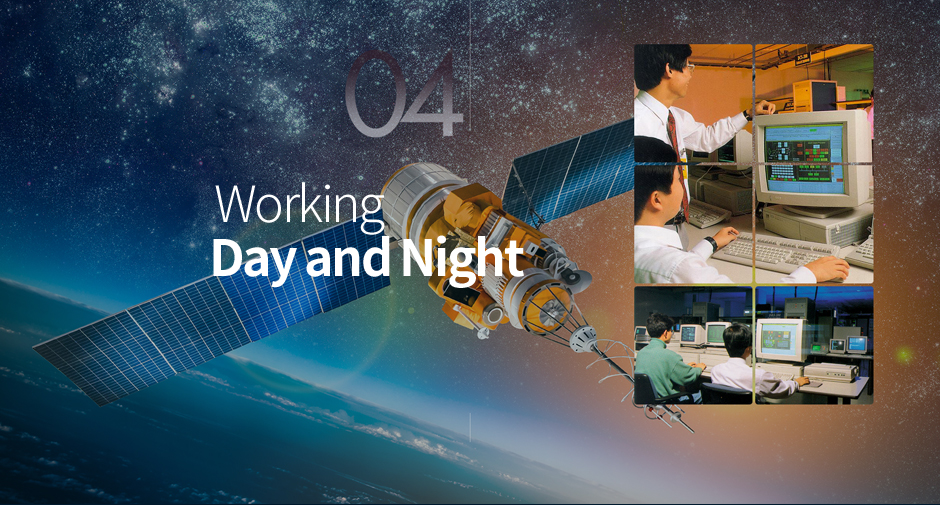
The researchers at ETRI say that they were able to achieve success by working day and night. This shows their dedication and commitment to the project. The greatest significance lies in enhancing the speed over general circuits to 155 Mbps. This technology proved especially useful during the 2002 FIFA World Cup.
Success was attained under harsh research conditions, including a lack of researchers. Sixteen years have passed already, but the team still looks back fondly on the days of earning the title of “world’s first.” Later, ETRI expanded its research areas to include broadcasting, so as to meet the higher technical expectations of the world. The institute continues to excel in terms of technical capacity, transmission services, and cost competitiveness.








